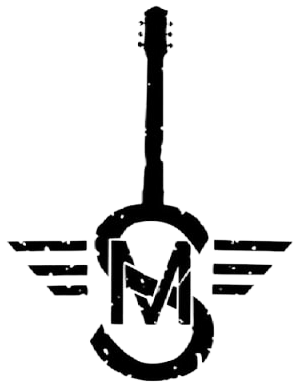What is ATO and PTO in Oracle?
Oracle Applications supports the Configure to Order environment with a range of features in order entry, demand forecasting, master scheduling, production, shipping, and financial accounting. Configure to Order: Includes Pick-to-Order (PTO) and Assemble-to-Order (ATO) items, models, and hybrids.
What is CTO in order management?
The Configure-to-Order process (CTO) is a cross-modular process that enables you to select options in the sales order window to define a possibly unique item, build the item using Oracle’s Manufacturing Applications Suite, and continue processing the item as if it were a standard item through the shipping and invoicing …
What are order types in Oracle Apps?
Order types are required for entering orders and returns because they specify processing rules and order entry defaults. You assign an order cycle to each order type to control the order processing and to provide default values for this order type.
What are the steps required to connect an order management to a source system?
- Overview of Collecting Promising Data for Order Management.
- Collect Planning Data for Order Management.
- Collect Source System Data.
- Collect Runtime Data.
- Set Up Promising Rules and Sourcing Rules for Order Management.
- Refresh the Order Promising Server for Order Management.
What is CTO and ETO?
With ETO, an order is made before the manufacturing process has begun, while with CTO, base products exist before an order is received. This changes when materials are procured.
What is the difference between ETO and MTO?
The difference between the ETO approach to production and make to order products is that engineering original products to order includes the entire design process. In MTO companies typically have a fixed design and specifications to start with.
What is ATO and CTO?
Assemble to Order (ATO) – also known as Configure to Order (CTO) – is a production and inventory system where components and subassemblies of a final product are manufactured, but not yet assembled before the customer order is made.
What is the difference between make to order and assemble to order?
Key Takeaways
In make-to-order, products are made from scratch and customized to the customer’s specific requirements. In assemble-to-order, products are assembled from previously completed sub-assemblies once an order comes in.
How many types of sales orders are there in Oracle Apps?
Standard Order2. Book and Bill 3. Expense Order4. Demonstration order5.
What is Oe_order_headers_all?
1. OE_ORDER_HEADERS_ALL is the parent table of OE_ORDER_LINES_ALL table which is used to store the Sales Order Line level Data in Oracle Fusion. 2. To connect the Sales Order Header and SO Line table, use the column HEADER_ID.
What are the 3 steps of order processing?
How does order management work: Order Management Process
- Stage 1 – Receiving the customer’s order.
- Stage 2 – Fulfilling the customer’s order.
- Stage 3 – Handling the post-sales processes.
Which of the following step is involved in order processing?
Steps in order processing include picking, sorting, tracking and shipping. Order processing can range from manual processes (handwritten on an order log sheet) to highly technological and data-driven processes (through online orders and automated order processing software) depending on the operation.
What is MTO MTS and Ato?
Abstract. Production systems are often classified according to the way production is released, e.g. make-to-stock (MTS), make-to-order (MTO), assembly-to-order (ATO) or engineer-to-order (ETO). The choice of a type of production depends on the decoupling point between customer and supplier.
What is assemble-to-order examples?
Example of Assemble-to-Order (ATO)
It might have all of the essential parts of a computer—motherboards, graphic cards, processors, monitors, keyboards—in stock and already manufactured. The company depends on various suppliers for these components.
What is the advantage of assemble-to-order?
Advantages of the Assemble-to-Order Strategy
By reducing storage and inventory needs, the assemble-to-order strategy substantially reduces capital costs, such as warehousing and investment in materials and raw supplies. It allows the manufacturer to adopt a lean business model, with fewer sunk costs.
What are the types of sales orders?
Types of Sales Orders
- Cash Sales. This is defined as an order type, where the customer places an order, picks up the order and pays for the goods.
- Rush Order.
- Scheduling Agreement.
- Consignment Fill-up.
- Consignment Issue.
- Third-Party Order.
What is transaction type in Oracle Order Management?
Definition of transaction types is required in Oracle Order Management. Transaction Types provide default information for sales documents such as orders, quotes, and sales agreements, and establish process controls with Oracle Workflow.
What is Oe_order_lines_all?
The OE_ORDER_LINES_ALL table now stores Shipments, Options, Included Items Lines and Configuration Item Lines. Every line is a shipment and is identified via a line number and a shipment number.
What are the six steps in the order management process?
Businesses can be made or destroyed by their order management and order processing.
…
The six steps in the order management process or flow are:
- Order placed.
- Order received.
- Products Picked.
- Products Packed.
- Order shipped.
- Order delivered.
What are the 2 components of order management?
How does order management work: Order Management Process
- Stage 1 – Receiving the customer’s order.
- Stage 2 – Fulfilling the customer’s order.
- Stage 3 – Handling the post-sales processes.
What is the difference between ATO and CTO?
What is ETO vs CTO?
The main difference here is where the order happens. With ETO, an order is made before the manufacturing process has begun, while with CTO, base products exist before an order is received. This changes when materials are procured.
What is meant by assemble-to-order?
Assemble-to-order strategy allows a product or service to be made to specific order, where a large number of products can be assembled in various forms from common components.
What is the advantages of assemble-to-order?
